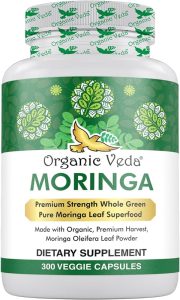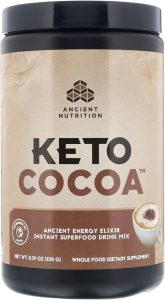With age, there are changes in the food list, including a reduction in main food groups, changes to the proportions of each food group, encouragement to drink water, and a recommendation to avoid processed foods. The updated Canada Food Guide has brought about these changes, establishing new guidelines and food behaviours.
As adults age, taste preferences, food choices, and eating habits all change, which can affect the appeal of food. Some medicines can also affect the taste of foods or make one less hungry. In order to maintain good health and slow down age-related changes, it is important to consume a balanced and nutritious diet that includes energy-dilute grains, vegetables, fruits, and healthy foods from all food groups.
Importance Of Adapting Diet
As we go through different stages of life, our nutritional needs change. It is essential to adapt our diet to meet these changing needs. The importance of adapting our diet cannot be overstated, as it directly impacts our health and well-being. In this section, we will explore the health implications of a static diet and the benefits of dietary evolution.
Health Implications Of A Static Diet
A static diet, or one that lacks variety and fails to evolve with age, can have significant health implications. Here are some of the potential consequences:
- Poor nutrient intake: A static diet may lead to deficiencies in essential nutrients, vitamins, and minerals that are crucial for optimal health.
- Increased risk of chronic diseases: Consuming the same foods over a long period may increase the risk of chronic diseases such as diabetes, cardiovascular diseases, and certain types of cancer.
- Impaired digestion: Age-related changes in digestion, such as slower gastric emptying and altered hormonal responses, can be exacerbated by a static diet, leading to digestive discomfort and nutrient malabsorption.
- Reduced immune function: An inadequate and unvaried diet can weaken the immune system, making us more susceptible to infections and illnesses.
Benefits Of Dietary Evolution
Adapting our diet to suit our age brings numerous benefits that contribute to our overall well-being. Here are some of the advantages of dietary evolution:
- Optimal nutrient intake: Adjusting our diet to meet the changing nutrient requirements ensures that we receive the necessary vitamins, minerals, and macronutrients for good health and vitality.
- Improved digestion and metabolism: Tailoring our diet to accommodate age-related changes in digestion and metabolism can alleviate digestive issues and support a healthy weight.
- Enhanced immune function: A diverse and varied diet provides a wide range of nutrients that support a robust immune system, helping to ward off illnesses and infections.
- Reduced risk of chronic diseases: By incorporating a variety of foods rich in antioxidants, fiber, and other beneficial compounds, we can lower the risk of chronic diseases and promote longevity.
In conclusion, adapting our diet to cater to our changing nutritional needs as we age is of utmost importance. A static diet can have adverse effects on our health, while evolving our dietary habits can lead to improved well-being, optimal nutrient intake, and reduced risk of chronic diseases. It is crucial to consult with healthcare professionals, such as registered dietitians, to develop a personalized eating plan that promotes healthy aging.

Tailoring Food Choices For Toddlers
As toddlers grow, their food choices need to be tailored to their age. Changes in a toddler’s food list with age include a reduction in main food groups, changes to proportions of each food group, encouragement to drink water, recommendations to avoid processed foods, and establishment of food behaviours.
These changes help promote healthy eating habits and meet the nutritional requirements of growing toddlers.
Essential nutrients for early growth Toddlers are at a critical stage of development, and providing them with essential nutrients is crucial for their growth. They require a well-balanced diet that includes a variety of nutrients to support their overall development. Here are some key nutrients that should be included in a toddler’s diet: – Protein: Protein is essential for building and repairing tissues, promoting healthy growth, and supporting the immune system. Good sources of protein for toddlers include lean meats, poultry, fish, eggs, dairy products, legumes, and tofu. – Carbohydrates: Carbohydrates provide energy to fuel a toddler’s active lifestyle. It is important to include complex carbohydrates from whole grains, such as brown rice, whole wheat bread, and oatmeal, as well as fruits and vegetables. – Healthy fats: Healthy fats are important for brain development and the absorption of vitamins. Offer foods rich in healthy fats like avocados, nut butter, olive oil, and fatty fish like salmon or tuna. – Calcium: Calcium is essential for the development of strong bones and teeth. Provide toddlers with calcium-rich foods such as dairy products (milk, cheese, yoghurt), fortified plant-based alternatives, and leafy green vegetables. – Iron: Iron is necessary for the production of red blood cells and delivering oxygen to the body’s cells. Offer iron-rich foods like lean meats, poultry, fish, beans, legumes, fortified cereals, and leafy green vegetables. Balancing taste and health in meals
When It Comes To Feeding Toddlers, It’s Important To Strike A Balance Between Taste And Nutrition. While It Might Be Tempting To Give In To Their Preferences For Sweet Or Salty Foods, It’s Crucial To Offer Them A Variety Of Healthy Options. Here Are Some Tips To Help You Balance Taste And Health In Meals: – Introduce A Variety Of Flavors: Offer A Wide Range Of Fruits, Vegetables, Grains, And Proteins To Expose Your Toddler To Different Tastes And Textures. This Will Help Expand Their Palate And Encourage Them To Try New Foods. – Be Creative With Presentation: Make Mealtimes Fun By Presenting Healthy Foods In An Appealing Way.
Use Cookie Cutters To Shape Fruits And Vegetables, Arrange Food In Colorful Patterns, Or Create Funny Faces With Healthy Ingredients. – Use Herbs And Spices: Adding Herbs And Spices Can Enhance The Flavor Of Food Without The Need For Excessive Salt Or Sugar. Experiment With Different Herbs And Spices To Create Delicious And Nutritious Meals For Your Toddler.
– Involve Them In Meal Preparation: Letting Your Toddler Help In The Kitchen Can Make Mealtimes More Enjoyable For Them. Allow Them To Assist In Simple Tasks Like Mixing Ingredients, Washing Fruits And Vegetables, Or Setting The Table.
This Involvement Can Increase Their Interest In Trying New Foods. – Offer Healthy Alternatives: Instead Of Reaching For Processed Snacks Or Sugary Drinks, Offer Healthier Alternatives Like Homemade Fruit Popsicles, Yogurt With Fresh Fruits, Or Whole-grain Crackers With Hummus. These Options Are Both Tasty And Nutritious. remember, It’s Essential To Continue Offering A Variety Of Nutritious Foods To Your Toddler And To Be Patient As They Develop Their Taste Preferences. By Providing A Well-balanced Diet And Promoting A Positive Mealtime Environment, You Can Ensure That Your Toddler Receives The Necessary Nutrients For Their Growth And Development.
Dietary Evolution In Adolescent Years
As adolescents grow older, their dietary needs and preferences undergo significant changes. They tend to consume less energy-dense sweets and fast foods and increase their intake of energy-dilute grains, vegetables, and fruits. Taste preferences, food choices, and eating habits evolve with age, influenced by factors such as hormonal responses, decreased metabolic rate, and altered taste perception.
It is important to adapt to this dietary evolution and prioritize healthy eating habits for optimal growth and development.
Adjusting For Increased Energy Needs
During adolescence, the body goes through significant changes, both physically and mentally. As a result, energy needs increase to support growth, development, and increased activity levels. It is important to adjust the diet to meet these increased energy requirements.
Some tips to adjust for increased energy needs during adolescence include:
- Including a variety of nutrient-dense foods such as fruits, vegetables, whole grains, lean proteins, and low-fat dairy products.
- Incorporating healthy fats, such as avocados, nuts, and seeds, to provide essential nutrients and help with satiety.
- Choosing carbohydrates that are high in fiber, such as whole grains, legumes, and fruits, to provide sustained energy throughout the day.
- Consuming adequate amounts of protein from sources like lean meats, poultry, fish, eggs, and plant-based proteins to support growth and repair of tissues.
- Staying hydrated by drinking plenty of water throughout the day.
- Limiting the intake of sugary beverages and opting for healthier alternatives like infused water or unsweetened drinks.
- Adjusting portion sizes to match individual energy needs while maintaining a balanced diet.
Coping With Changing Tastes And Habits
Adolescence is a time where taste preferences, food choices, and eating habits undergo significant changes. It is essential to adapt to these changes to ensure adequate nutrition and promote a healthy relationship with food.
Here are some strategies to cope with changing tastes and habits during this stage:
- Exploring new flavors: Encourage trying a variety of foods to expand the palate and discover new favorites.
- Getting creative in the kitchen: Engage adolescents in meal planning and preparation to make healthy eating more enjoyable.
- Setting a positive example: Role model healthy eating habits by incorporating a variety of nutritious foods into your own meals and snacks.
- Creating a supportive environment: Stock the kitchen with wholesome options and limit the availability of unhealthy snacks.
- Seeking professional guidance: If needed, consult a registered dietitian for tailored advice on meeting nutritional needs during this transitional period.
- Listening to hunger and fullness cues: Encourage practicing mindful eating and honoring internal cues of hunger and fullness.
- Being flexible: Allow room for occasional indulgences while maintaining an overall balance.
Changes In Food List With Age For Adults
As adults age, their nutritional needs and dietary requirements change. Various factors, such as metabolic adjustments and the natural aging process, influence the changes in food choices and eating habits. It becomes vital to adapt the food list to ensure optimum health and well-being. In this section, we will explore two key aspects: midlife metabolic adjustments and preemptive dietary changes for aging.
Midlife Metabolic Adjustments
During midlife, adults experience metabolic adjustments that can impact their dietary needs. These adjustments occur due to hormonal changes and a decrease in basal metabolic rate. As a result, individuals may require fewer calories to maintain a healthy weight and overall energy balance.
It is important to note that these adjustments can vary from person to person, and individuals should consult with healthcare professionals or registered dietitians to determine their specific dietary requirements. Appropriate modifications to the food list can then be made to support metabolic health.
Preemptive Dietary Changes For Aging
As individuals age, their bodies undergo various physiological changes that can affect their eating behaviors and nutritional needs. Slower gastric emptying, altered hormonal responses, decreased basal metabolic rate, and changes in taste perception can all impact the dietary choices and preferences of older adults.
To ensure healthy aging, preemptive dietary changes should be made. These changes may include:
- Increasing the consumption of fruits, vegetables, whole grains, and dairy products to improve diet quality.
- Reducing the intake of added sugars, saturated fats, and sodium to promote overall health.
- Being mindful of portion sizes and adapting food volume to match changes in appetite and energy expenditure.
By making these preemptive dietary changes, individuals can support their nutritional needs as they age and maintain optimal health and well-being.
Special Nutrient Needs For Seniors
As we age, our nutrient needs change, and it becomes crucial to adapt our diet to support our overall health and well-being. Special nutrient needs for seniors are essential to combat age-related dietary deficiencies and ensure optimal nutrition. In this section, we will discuss the importance of addressing these specific nutrient needs and how to adapt meals for physical limitations in order to maintain a healthy and balanced diet.
Combatting Age-related Dietary Deficiencies
With age, our bodies undergo physiological changes that can impact our ability to absorb and utilize nutrients effectively. Slower gastric emptying, altered taste, and decreased basal metabolic rate are some of the changes that can affect our dietary needs. To combat age-related dietary deficiencies, it is important to focus on nutrient-dense foods that provide essential vitamins, minerals, and antioxidants. Here are some key nutrients that seniors need to pay attention to:
- Calcium: Essential for bone health and prevention of osteoporosis.
- Vitamin D: Aids in calcium absorption, supports immune function, and helps maintain muscle strength.
- Fiber: Important for bowel regularity, heart health, and weight management.
- Omega-3 fatty acids: Promote brain health, reduce inflammation, and support heart health.
- Protein: Crucial for maintaining muscle mass and strength, especially for seniors who may experience muscle loss.
- Vitamin B12: Essential for nerve function and the production of red blood cells.
It’s important to incorporate a variety of nutrient-dense foods into your diet to ensure you are meeting your specific nutrient needs. For example, including sources of calcium like low-fat dairy products, leafy greens, and fortified plant-based milks can help support bone health. Additionally, adding fatty fish, chia seeds, and walnuts can provide omega-3 fatty acids. If you are concerned about meeting your specific nutrient needs or have dietary restrictions, consult with a healthcare professional or registered dietitian for personalized guidance.
Adapting Meals For Physical Limitations
As we age, physical limitations such as decreased mobility, dental issues, or difficulty swallowing can impact meal preparation and food choices. However, it’s crucial to ensure that seniors still receive adequate nutrition despite these limitations. Here are some strategies for adapting meals for physical limitations:
- Texture modifications: If chewing or swallowing becomes difficult, consider opting for softer foods or pureed dishes that are easier to consume.
- Finger foods: If dexterity is an issue, incorporating finger foods like cut-up fruits, vegetables, and bite-sized portions can make it easier to manage and enjoy meals.
- Food preparation assistance: Enlist the support of a caregiver, family member, or home meal delivery service to help with meal preparation and ensure a variety of nutritious options.
- Small, frequent meals: Eating smaller, more frequent meals throughout the day can help address reduced appetite or difficulty consuming larger portions.
By adapting meals to physical limitations and considering individual needs, seniors can continue to enjoy a variety of nutrient-rich foods that promote good health and overall well-being.
Age-related Digestive Changes
As we age, there are changes in our digestive system that affect our food choices. Physiological changes such as slower gastric emptying and altered taste can lead to a reduced appetite or changes in taste preferences. It is important to make dietary adjustments by eating more fruits, vegetables, whole grains, and dairy, while cutting down on added sugars, saturated fat, and sodium.
Avoiding processed foods and staying hydrated with water are also recommended.
The Impact Of Slower Digestion
As we age, our digestive system undergoes various changes. One significant change is the slowing down of digestion. This can have a direct impact on our overall health and well-being, as it affects the way our body processes food and absorbs nutrients.
Slower digestion can lead to various issues such as bloating, indigestion, and constipation. Prolonged digestion times may also result in reduced nutrient absorption, making it essential to make dietary adjustments that support digestive health.
Suitable Diets For Sensitive Stomachs
To maintain a healthy digestive system, it is important to follow a suitable diet for sensitive stomachs. These diets typically include foods that are easily digestible and gentle on the stomach. Some dietary recommendations for individuals with age-related digestive changes include:
- Choose easily digestible proteins like lean meats, fish, tofu, and legumes.
- Incorporate high-fiber foods such as whole grains, fruits, and vegetables to promote regular bowel movements and prevent constipation.
- Opt for smaller, more frequent meals to ease the burden on the digestive system.
- Drink plenty of water throughout the day to stay hydrated and support proper digestion.
- Consider incorporating probiotic-rich foods like yogurt and kefir to promote a healthy gut microbiome.
- Limit processed foods, added sugars, and saturated fats, as these can exacerbate digestive issues.
- If you experience specific food intolerances or sensitivities, avoid or limit those foods to avoid discomfort.
- Consult with a healthcare professional or registered dietitian for personalized dietary advice based on your specific needs.
By following these dietary recommendations, individuals can help alleviate digestive discomfort and promote better overall digestive health.
Integrating Health Concerns Into Meal Planning
As we age, our nutritional needs change, leading to necessary adjustments in our food list. Physiological changes, such as slower digestion and altered taste, require us to focus on foods that promote good health and combat age-related changes. These adjustments may include consuming more fruits, vegetables, whole grains, and dairy while cutting down on added sugars, saturated fat, and sodium.
It’s important to read ingredient lists and make informed choices about our meals to ensure optimal health.
Personalizing Diets For Medical Conditions
As we age, our nutritional needs change, and it becomes essential to personalize our diets to address specific medical conditions. Certain medical conditions, such as diabetes, high blood pressure, or heart disease, may require dietary modifications to manage symptoms and promote overall health. When it comes to personalizing diets for medical conditions, it is crucial to consult with healthcare professionals or registered dietitians who can provide personalized guidance and recommendations based on individual needs.
Seasonal And Lifestyle Dietary Modifications
In addition to personalizing diets for medical conditions, seasonal and lifestyle factors also play a significant role in meal planning as we age. Depending on the season and regional availability, incorporating seasonal fruits, vegetables, and whole grains into the diet can provide a wide range of essential nutrients. Moreover, modifying the diet based on lifestyle changes, such as decreased physical activity or specific dietary preferences, can help maintain optimal health and well-being.
Here are a few considerations when it comes to seasonal and lifestyle dietary modifications:
- Include a variety of fresh, seasonal fruits and vegetables in your meals. These are packed with essential vitamins, minerals, and antioxidants necessary for healthy aging.
- Opt for whole grains, such as brown rice, quinoa, and whole wheat bread, instead of refined grains. Whole grains are rich in fiber and provide a steady release of energy.
- Reduce the consumption of added sugars, saturated fats, and sodium. Choose healthier cooking methods, such as steaming, grilling, or baking, instead of deep-frying or pan-frying.
- Stay hydrated by drinking an adequate amount of water throughout the day. As we age, our body’s thirst sensation may decrease, so it’s crucial to be mindful of fluid intake.
By making these seasonal and lifestyle dietary modifications, we can ensure that our bodies receive the necessary nutrients to support our changing needs as we age.
Frequently Asked Questions Of Changes In Food List With Age
What Are Dietary Changes Of Old Age?
Dietary changes in old age include a reduction in main food groups, changes to proportions of each group, drinking more water, avoiding processed foods, following broad guidelines, and establishing food behaviors. Some may also experience changes in taste and smell.
It is important to consult with a doctor for any difficulties with changing tastes and smells.
How Does Age Affect Food Choices?
As adults age, their taste preferences, food choices, and eating habits change, which can affect their food appeal. Some may lose their sense of taste or smell, and certain medications can also affect taste and appetite. It is important to talk to a doctor if you experience difficulties with changing tastes and smells.
Additionally, it is recommended to eat a variety of fruits, vegetables, whole grains, and dairy while reducing added sugars, saturated fat, and sodium. Avoiding processed foods and staying hydrated by drinking water is also encouraged.
How Does Diet Vary With Age?
With age, the diet changes by reducing intake of main food groups and adjusting proportions of each group. Water consumption is encouraged while processed foods should be avoided. Broad guidelines are provided along with the establishment of food behaviors. The Canada’s Food Guide also emphasizes healthy food choices and nutritional requirements for different age groups.
What Are 5 Changes In The Food Guide?
The 5 changes in the food guide are: 1. Reduced emphasis on main food groups. 2. Adjusted proportions of each food group. 3. Promotion of drinking water. 4. Recommendation to avoid processed foods. 5. Adoption of broader guidelines for healthier eating.
Conclusion
As we age, our nutritional needs change, and it is important to make adjustments to our food choices. The main changes include a reduction in main food groups, changes to the proportions of each food group, encouragement to drink water, and a recommendation to avoid processed foods.
Additionally, the updated Canada’s Food Guide establishes food behaviors and provides a more broad set of guidelines. By being aware of these changes and implementing healthy eating habits, we can support our overall health and well-being as we age.










Be First to Comment